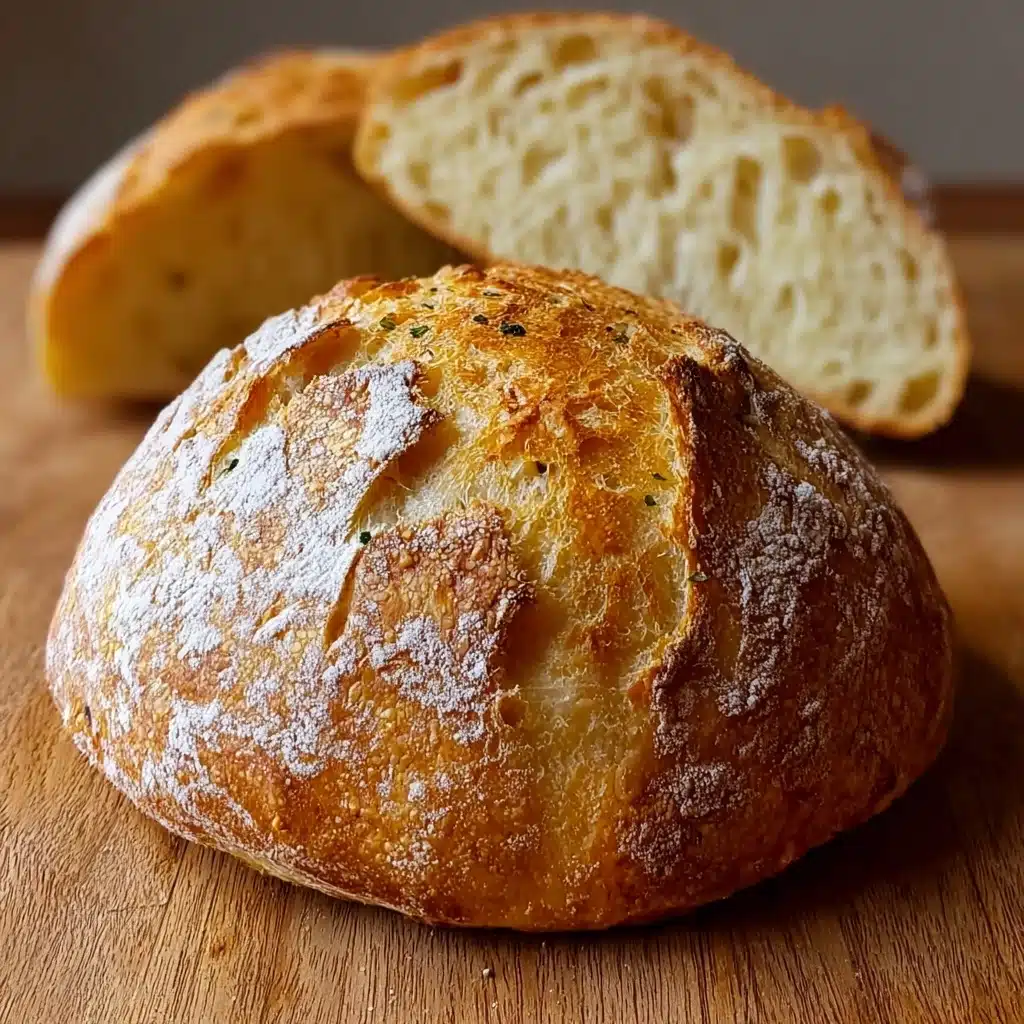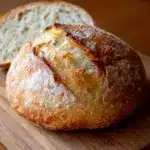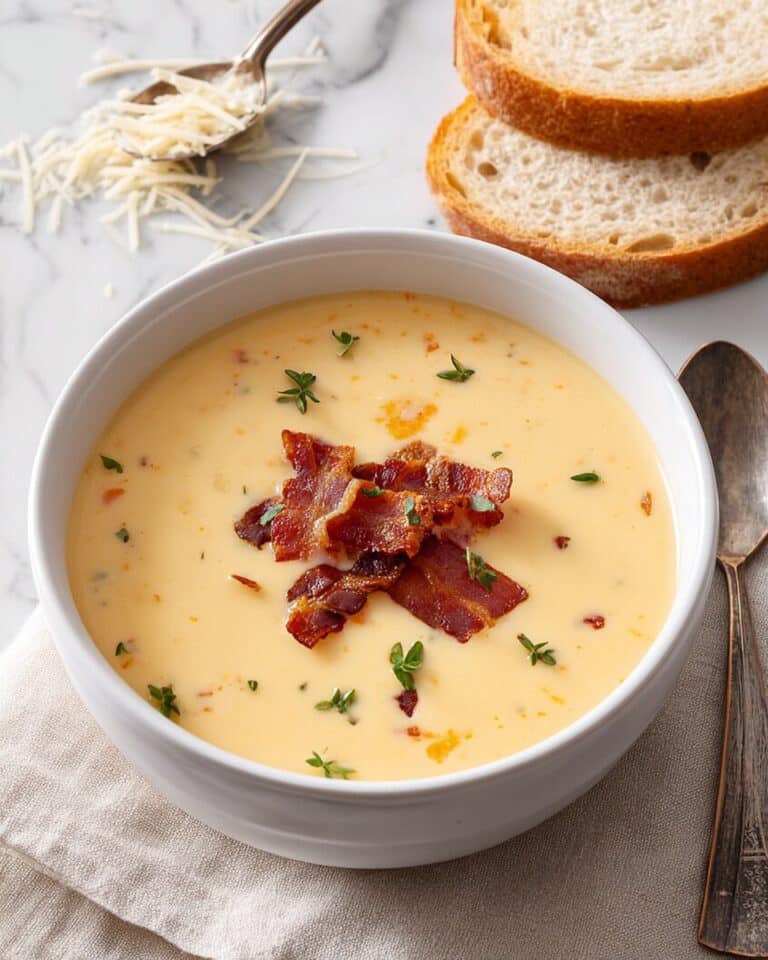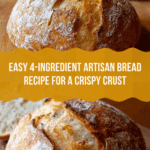4-Ingredient Artisan Bread Recipe
If you’ve ever dreamed of baking a rustic, bakery-quality loaf at home but felt intimidated by complex recipes, this 4-Ingredient Artisan Bread Recipe is your new best friend. It’s astonishingly simple yet delivers that perfectly crisp crust and soft, airy crumb everyone craves. With just flour, yeast, salt, and water, you’ll create a beautiful, flavorful bread with minimal effort and no kneading stress. This recipe celebrates the magic of basic ingredients and slow fermentation, turning your kitchen into an artisan bread haven.

Ingredients You’ll Need
These four simple ingredients may seem humble, but each plays a critical role in crafting the perfect loaf. Flour forms the bread’s structure, yeast provides life and lift, salt balances and enhances flavor, and warm water activates everything to come alive in your dough.
- All-Purpose Flour (3 cups): The main structure builder; unbleached works best for flavor and texture.
- Instant Yeast (¼ teaspoon): Provides a slow, flavorful rise; easy to work with and mixes right in with dry ingredients.
- Fine Sea Salt (1 ½ teaspoons): Essential for taste and controlling fermentation without any metallic aftertaste.
- Warm Water (1 ½ cups, about 105-115°F): Activates yeast gently without killing it and hydrates the flour fully for that sticky, shaggy dough.
How to Make 4-Ingredient Artisan Bread Recipe
Step 1: Combine Dry Ingredients
Start by whisking together your flour, salt, and instant yeast in a large bowl. This ensures even distribution, which is crucial for consistent rising. If you’re using active dry yeast instead, remember to proof it first for best results.
Step 2: Add Water and Mix
Pour in the warm water and give it a good stir with a wooden spoon or sturdy spatula until a shaggy, sticky dough forms. There’s no kneading necessary here, which is the beauty of this recipe. Just make sure there’s no dry flour left behind.
Step 3: First Rise (Bulk Fermentation)
Cover your dough tightly with plastic wrap or a reusable cover and let it rest at room temperature for 12 to 18 hours. During this time, the magic unfolds – your dough will rise, bubble, and develop deep, complex flavors. It should expand significantly and become quite jiggly.
Step 4: Shape the Dough Gently
Lightly flour your work surface and turn the dough out. Handle it tenderly to keep as many air bubbles as possible. Fold the edges into the center a few times to create a rough ball with surface tension. No perfection needed—rustic charm is key here.
Step 5: Second Rise (Proofing)
Place the dough on parchment paper, dust lightly with flour, and cover loosely. Let it rise again for 1 to 2 hours, until it’s noticeably puffed and springs back slowly when touched. This extra rest ensures an airy, light crumb inside.
Step 6: Preheat Oven and Dutch Oven
Set your oven to 450°F (232°C) with your Dutch oven inside to preheat for at least 30 minutes. This step is vital to create steam and trap heat, helping the crust achieve that artisan crunch.
Step 7: Score and Bake
Carefully remove the hot Dutch oven and place your dough inside with the parchment paper. If you’d like, score the top for beautiful oven spring and crust character. Cover with the lid and bake 30 minutes to generate steam for a glossy crust.
Step 8: Bake Uncovered
Remove the lid and continue baking for 15–25 minutes until the crust turns deep golden and crackly. The internal temperature should reach about 200-210°F for a perfectly baked loaf.
Step 9: Cool Completely
Transfer your bread to a wire rack and resist slicing until it cools fully, at least 1-2 hours. This resting period lets the crumb finish setting and retains that delightful crumb texture.
How to Serve 4-Ingredient Artisan Bread Recipe

Garnishes
A simple drizzle of good olive oil or a sprinkle of flaky sea salt on fresh slices can elevate your bread’s natural flavor. A touch of butter melted over a warm slice is also pure comfort on a plate.
Side Dishes
This bread shines alongside soups, stews, or hearty salads. It’s perfect for soaking up rich sauces or serving as a rustic base for bruschetta or fresh cheeses.
Creative Ways to Present
Try slicing the loaf thick and toasting for a cozy breakfast with mashed avocado and cherry tomatoes. Or use it as the foundation for a classic garlic bread with a sprinkle of herbs and Parmesan. The possibilities with this artisan loaf are endless!
Make Ahead and Storage
Storing Leftovers
Keep your bread fresh by storing it in a paper bag at room temperature for up to two days. Paper helps maintain the crispy crust while preventing sogginess that plastic can cause.
Freezing
If you make extra, slice the bread and freeze it in an airtight bag. This method lets you toast slices straight from the freezer for quick, fresh-tasting bread anytime.
Reheating
To revive day-old bread, warm slices in a preheated oven at 350°F for 5 to 10 minutes. This brings back the crisp crust and chewy interior, almost like freshly baked.
FAQs
Can I use bread flour instead of all-purpose flour?
Absolutely! Bread flour has a higher protein content, which can give your bread a chewier texture and more structure. All-purpose flour, however, works beautifully in this 4-Ingredient Artisan Bread Recipe and is more accessible.
Why is the water temperature important?
Water that’s too hot can kill the yeast, and water that’s too cold won’t activate it properly. Keeping it around 105-115°F ensures the yeast wakes up gently and starts fermentation smoothly, which is key for flavor and rise.
What if my dough doesn’t rise much?
Room temperature plays a big role in fermentation speed. If your kitchen is chilly, the rise might be slower—try to find a warmer spot or extend the rising time up to 24 hours for the best results.
Can I skip the second rise?
While it might be tempting to jump straight to baking, the second rise allows the dough to relax and develop a lighter crumb. Skipping it may result in denser bread with less oven spring.
Do I have to use a Dutch oven?
While the Dutch oven is ideal for creating steam and a crackly crust, you can improvise by baking on a preheated baking stone and adding a tray of water to your oven for steam. Still, the Dutch oven gives the most consistent artisan results.
Final Thoughts
This 4-Ingredient Artisan Bread Recipe is a game changer for anyone wanting luscious homemade bread without fuss. It’s a comforting, hands-off method that rewards you with bakery-quality flavor and texture. I encourage you to give it a go and enjoy the joyful aroma and taste of truly fresh bread, made with just four simple ingredients and a little patience.
Print
4-Ingredient Artisan Bread Recipe
- Total Time: 13-19 hours (including rising times)
- Yield: 1 loaf (about 8–10 servings) 1x
- Diet: Vegetarian
Description
This simple 4-Ingredient Artisan Bread recipe yields a crusty, flavorful loaf with minimal effort. Using just flour, yeast, salt, and water, this no-knead bread develops a beautifully airy crumb and crispy crust through slow fermentation and baking in a preheated Dutch oven. Perfect for beginners and homemade baking enthusiasts, the method requires little active time but rewards with bakery-quality bread.
Ingredients
Dry Ingredients
- 3 cups (approximately 400g) all-purpose flour (unbleached)
- ¼ teaspoon instant yeast (or ½ teaspoon active dry yeast, proofed)
- 1 ½ teaspoons fine sea salt (or kosher salt)
Wet Ingredients
- 1 ½ cups (355–360 ml) warm water at 105-115°F (40-46°C)
Instructions
- Combine Dry Ingredients: In a large mixing bowl, whisk together the all-purpose flour, fine sea salt, and instant yeast until evenly distributed. If using active dry yeast, proof it separately in warm water with a pinch of sugar before adding.
- Add Water and Mix: Pour the warm water into the bowl with dry ingredients and stir with a spatula or wooden spoon until a shaggy, sticky dough forms. Ensure no dry flour remains; no kneading is necessary.
- First Rise (Bulk Fermentation): Cover the dough tightly with plastic wrap or a bowl cover and let it rest at room temperature (68-72°F or 20-22°C) for 12 to 18 hours, until it doubles or triples in size and becomes bubbly and jiggly.
- Shape the Dough (Gently!): Lightly flour a clean surface and your hands. Gently scrape the dough onto it, then fold the edges toward the center 4-6 times to form a rough ball without overworking, preserving air bubbles.
- Second Rise (Proofing): Place the dough seam-side down on parchment paper dusted with flour, dust the top lightly with flour, cover loosely, and let rise 1 to 2 hours until about 50% larger and not springing back immediately when poked.
- Preheat Oven and Dutch Oven: About 30-45 minutes before baking, place your Dutch oven with lid inside your oven and preheat oven to 450°F (232°C) to ensure it’s piping hot.
- Score and Bake: Remove hot Dutch oven carefully. Optionally, score the top of the dough with a sharp blade to allow controlled steam release. Using the parchment, transfer dough into Dutch oven, cover with lid.
- Bake Covered: Bake for 30 minutes to trap steam that helps develop a crispy crust and oven spring.
- Bake Uncovered: Remove the lid carefully, bake an additional 15-25 minutes until crust is deep golden and crackly. Bread internal temp should reach 200-210°F (93-99°C).
- Cool Completely: Remove bread using parchment from Dutch oven and cool on a wire rack for 1-2 hours before slicing to set the crumb and avoid gumminess.
Notes
- If you only have active dry yeast, proof it in warm water with sugar before mixing.
- Use unbleached flour for best flavor and texture.
- Be gentle when shaping dough to preserve bubbles for airy crumb.
- The longer the first rise (up to 24 hours), the deeper the flavor.
- A preheated Dutch oven creates steam crucial for a crispy crust.
- Allow bread to cool completely before slicing to avoid gummy texture.
- Scoring is optional but improves oven spring and loaf appearance.
- Prep Time: 15 minutes
- Cook Time: 45-55 minutes
- Category: Bread
- Method: No-Knead, Dutch Oven Baking
- Cuisine: American
Nutrition
- Serving Size: 1 slice (approx. 1/10 loaf)
- Calories: 135
- Sugar: 0.5g
- Sodium: 275mg
- Fat: 0.3g
- Saturated Fat: 0.05g
- Unsaturated Fat: 0.2g
- Trans Fat: 0g
- Carbohydrates: 28g
- Fiber: 1.5g
- Protein: 3.5g
- Cholesterol: 0mg
Keywords: artisan bread, no-knead bread, 4 ingredient bread, Dutch oven bread, homemade bread, easy bread recipe







